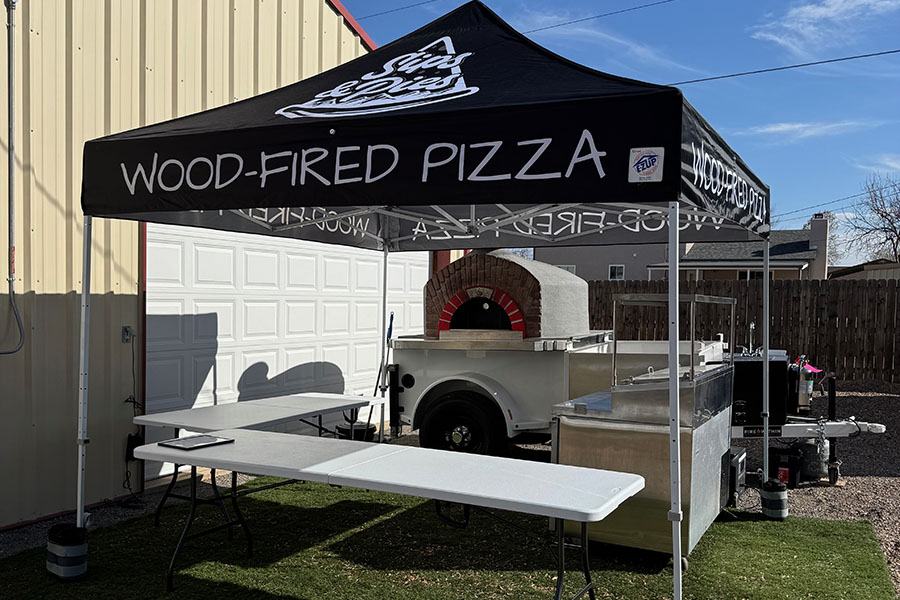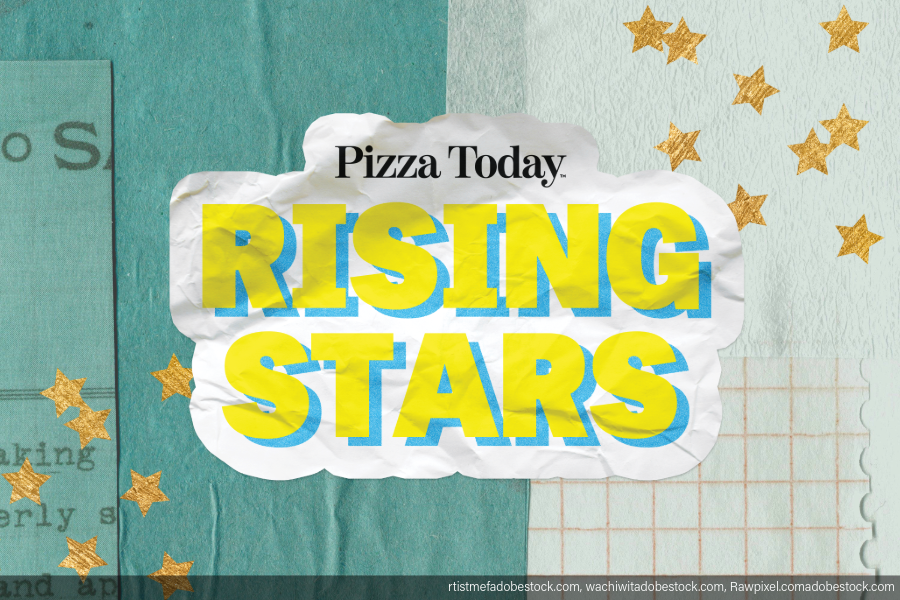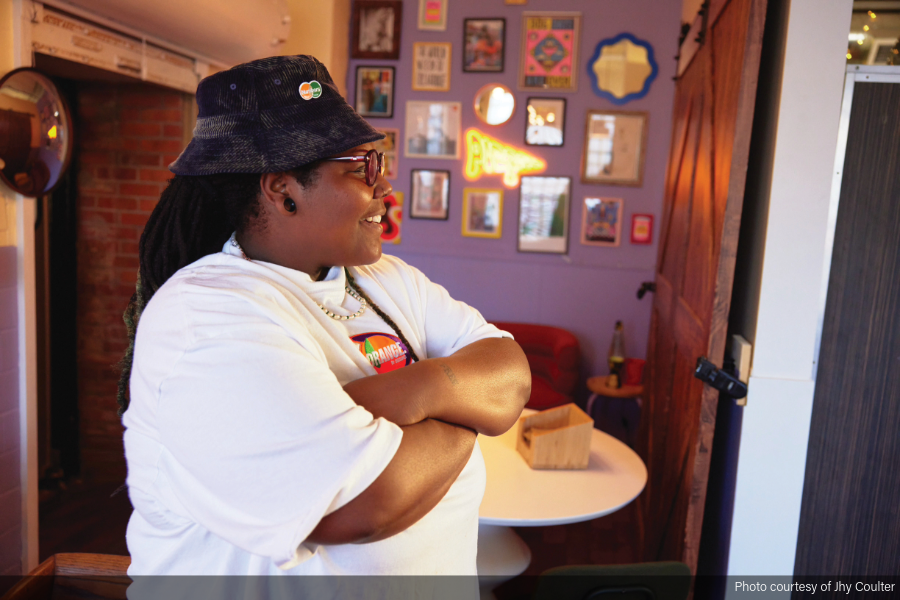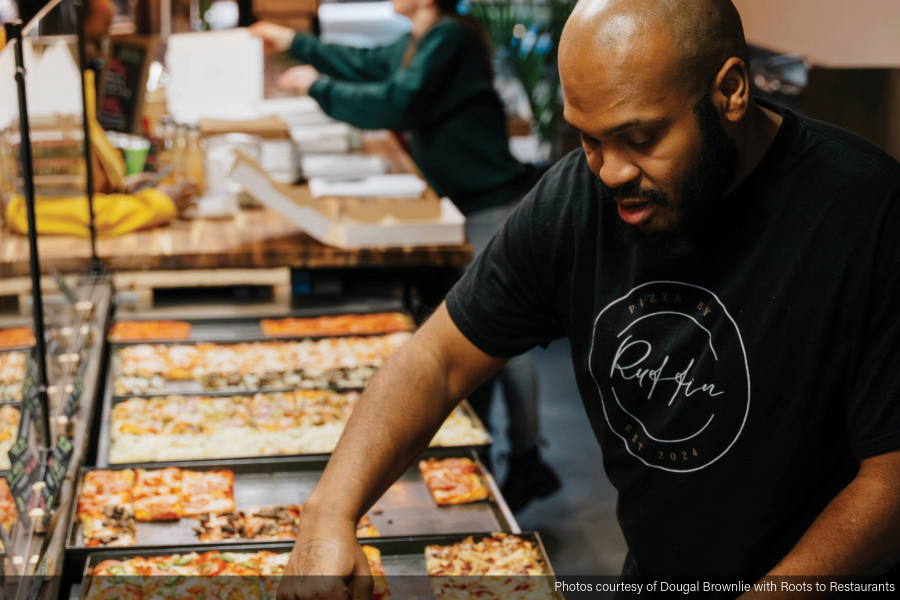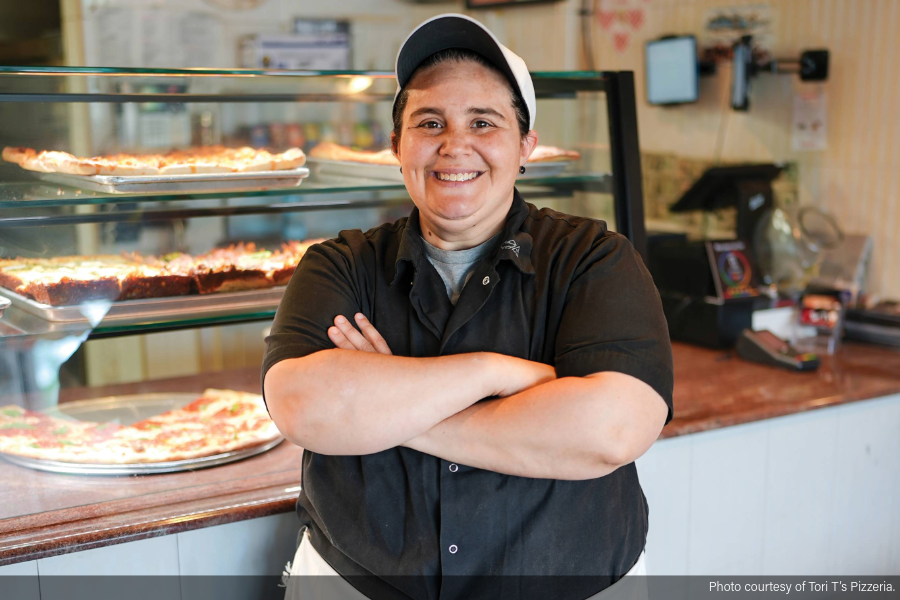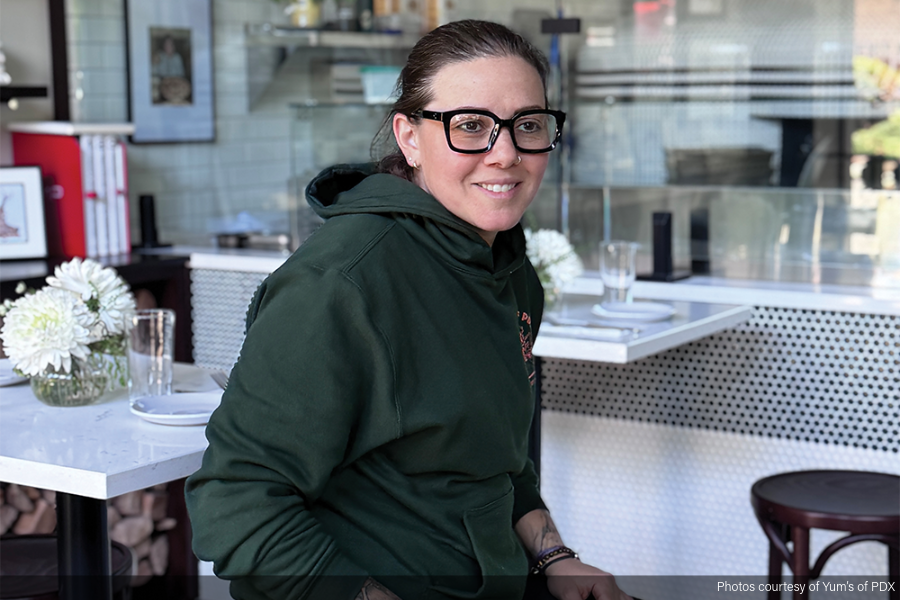 Investing in a look for a staff, whether it is a specific uniform from head to toe or more of a dress code that allows individual style, is a powerful way operators can show their customers who they are. A more casual pizzeria might have their staff in T-shirts and jeans whereas a formal dine-in restaurant may require collared shirts and ties. Depending on the dress, customers will get an immediate visual clue about who and what a restaurant is before even taking a bite of food. So, even though clothes don’t make the man, it can make your brand. And when done right, uniforms can have a positive impact on how customers see you and your restaurant. According to a survey commissioned by Cintas Corporation of 2,051 adults conducted online in January 2013 by Harris Interactive, nearly 65 percent said that a staff in uniforms gave them a more favorable impression of the company. “In the restaurant industry, uniforms are important. You have to have something in place that distinguishes between guests and employees,” says Jim Knight, founder and owner of Knight Speaker and CEO of Hospitality On Point. “It can get mashed together in retail, but in the restaurant industry, you have to clearly delineate the two — very important.” Mike Bausch, owner and operator of Andolini’s Pizzeria in Oklahoma, uses his staff’s uniforms as a visual hierarchy and an opportunity to showcase interesting facts about his restaurant’s high-grade flour. “The restaurant industry undervalues general managers looking the part,” Bausch says. “You want a regular consumer to look across the room and be able to see who to talk to if something is going wrong.” In addition to making staff easy to spot for consumers, uniforms create a unified front and an opportunity for staff to take pride in their appearance and in the brand they represent.
Investing in a look for a staff, whether it is a specific uniform from head to toe or more of a dress code that allows individual style, is a powerful way operators can show their customers who they are. A more casual pizzeria might have their staff in T-shirts and jeans whereas a formal dine-in restaurant may require collared shirts and ties. Depending on the dress, customers will get an immediate visual clue about who and what a restaurant is before even taking a bite of food. So, even though clothes don’t make the man, it can make your brand. And when done right, uniforms can have a positive impact on how customers see you and your restaurant. According to a survey commissioned by Cintas Corporation of 2,051 adults conducted online in January 2013 by Harris Interactive, nearly 65 percent said that a staff in uniforms gave them a more favorable impression of the company. “In the restaurant industry, uniforms are important. You have to have something in place that distinguishes between guests and employees,” says Jim Knight, founder and owner of Knight Speaker and CEO of Hospitality On Point. “It can get mashed together in retail, but in the restaurant industry, you have to clearly delineate the two — very important.” Mike Bausch, owner and operator of Andolini’s Pizzeria in Oklahoma, uses his staff’s uniforms as a visual hierarchy and an opportunity to showcase interesting facts about his restaurant’s high-grade flour. “The restaurant industry undervalues general managers looking the part,” Bausch says. “You want a regular consumer to look across the room and be able to see who to talk to if something is going wrong.” In addition to making staff easy to spot for consumers, uniforms create a unified front and an opportunity for staff to take pride in their appearance and in the brand they represent.
“Even if you have a laissez-faire college style, you want the staff to care, and if they’re all wearing whatever they want, it can lead to a ‘whatever man,’ mentality,” Bausch says. Tom Wilscam, senior consultant for W&W Restaurant Consulting Group in Boulder, Colorado, says a restaurant’s concept should determine the uniform. According to Knight, operators can make it easy by picking one color for the whole uniform that allows the employees to blend into the background, but when standing together, they look like a staff. “As employers, if uniforms are important, then make it important up front. You have to be crystal clear with uniforms — as early as possible,” Knight says. “If you require a uniform, you have to be deliberate about it. Say ‘here’s the two types of brands,’ and then have a couple examples on a poster, in the handbook. If it’s still not crystal clear, let’s look at it and fill in the blanks. Is it within the bracket of the brand? Have a picture of what’s acceptable –– let’s look at it and see if it’s okay, and know that you’re not able to be on the floor if you don’t represent the brand well.” To give his staff options within his uniform requirements, Bausch offers three types of T-shirts: Hanes Beefy, American Apparel and Bella Female, and three types of hats: Chef Works Beanie, a baseball flex fit cap and a Chef Works Driver hat. Zach Current, co-owner and operator of Fuel Pizza and Custom Fuel Pizza & Salads, says his staffs have clear uniform rules to follow. “Employees are always required to display two logos –– one on their hat and one on their shirt or jacket,” he says. “We give them an option of wearing their choice of jeans or chinos with no holes or tears. After Easter, they are allowed to wear shorts, but no cutoffs and they have to be long enough that while holding their hands next to their sides, the shorts are longer. A belt must be worn and shirts must be tucked in. We are very proud of our brand and all of our shirts reflect our pride. Hats must be worn; shoes must be either non-slip of choice or sneakers — no holes.”  Current adds that if employees come into work with stained or ripped clothes, they are sent home to change and given a written warning. “Clean clothes are the responsibility of the employee, he says. “However, we provide bib aprons and have extra shirts available in case of an accident.” Once operators decide on a uniform they have to figure out who foots the clothing and laundry bills. “It depends on the type of restaurant and the laws of the state — in some states, the employer has to provide them,” Wilscam says. “We recommend to our clients, for example, if it’s a T-shirt with a logo, we recommend the operator provide the first two, and the employee is responsible for maintaining them. The most important thing is what the state requires.” Knight says if a company is going to insist on branded apparel like a shirt, the company usually buys, but handling any rips, tears, and general care should fall on the employee. “If a restaurant is serious and cares about the brand, managers have to remind people all the time, and if the employees are not ready, they have to go home for the day — when it starts affecting the pocketbook, people start paying attention,” Knight adds. Employees who have to pay for their own uniforms should consider it an investment, Bausch says. “My advice — that $7 for a T-shirt taken out of a paycheck is not that much. Three shirts for an average worker — six shirts for someone working a lot, and that’s an investment. But it still costs less than one pair of jeans that the kid is wearing costs.” Uniforms set staff apart and help operators reinforce their brand. Even a simple uniform has an impact on a customer’s perception of a restaurant. If employees have a clear understanding of uniform or dress code rules, they and the restaurant they represent will always be looking good. DeAnn Owens is a freelance journalist living in Dayton, Ohio. She specializes in features and human-interest stories.
Current adds that if employees come into work with stained or ripped clothes, they are sent home to change and given a written warning. “Clean clothes are the responsibility of the employee, he says. “However, we provide bib aprons and have extra shirts available in case of an accident.” Once operators decide on a uniform they have to figure out who foots the clothing and laundry bills. “It depends on the type of restaurant and the laws of the state — in some states, the employer has to provide them,” Wilscam says. “We recommend to our clients, for example, if it’s a T-shirt with a logo, we recommend the operator provide the first two, and the employee is responsible for maintaining them. The most important thing is what the state requires.” Knight says if a company is going to insist on branded apparel like a shirt, the company usually buys, but handling any rips, tears, and general care should fall on the employee. “If a restaurant is serious and cares about the brand, managers have to remind people all the time, and if the employees are not ready, they have to go home for the day — when it starts affecting the pocketbook, people start paying attention,” Knight adds. Employees who have to pay for their own uniforms should consider it an investment, Bausch says. “My advice — that $7 for a T-shirt taken out of a paycheck is not that much. Three shirts for an average worker — six shirts for someone working a lot, and that’s an investment. But it still costs less than one pair of jeans that the kid is wearing costs.” Uniforms set staff apart and help operators reinforce their brand. Even a simple uniform has an impact on a customer’s perception of a restaurant. If employees have a clear understanding of uniform or dress code rules, they and the restaurant they represent will always be looking good. DeAnn Owens is a freelance journalist living in Dayton, Ohio. She specializes in features and human-interest stories.

